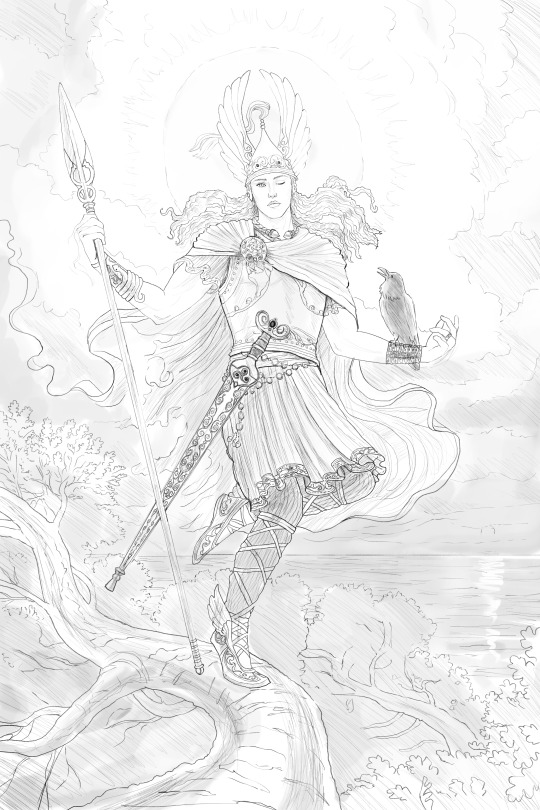#European Myths
Text
Ségurant, the Knight of the Dragon (2/4)
Let us continue down our path along the documentary. Here is the German version of it, by the way, if you are interested.
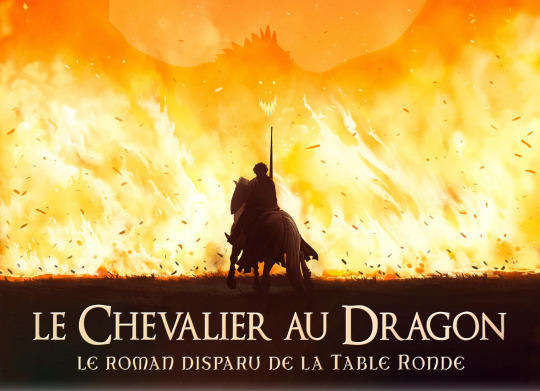
So, last time we left with the sad conclusion that the origins of Ségurant were not from Great-Britain: he appears nowhere in England, Scotland or Wales. If there is nothing in British land, the next move is of course towards the land where Ségurant's tale was first found out, and the second main source when it came to Arthuriana: France.
The documentary reminds us that the Arthurian crossed the seas and arrived in France in the 12th century. It was first written about in France by a man from Normandy named Wace (who was the one who invented the Round Table), and then it was time for Chrétien de Troyes and his famous romans (first romans in French literary history and the beginning of the romanesque genre) – which became best-sellers, translated, imitated, continued and rewritten throughout all of Europe, becoming the “norm” of the literary culture of Europe at the time (in non-Latin language of course). Chrétien de Troyes’ novel became especially popular among the expanding cities and newly formed bourgeoisies of the time, making Lancelot and Perceval true European heroes, and resulting in thousands of Arthurian manuscripts being sent and created everywhere.
There is a brief intervention of Michel Zink explaining what was so specific about Chrétien’s romans: by the time Chrétien wrote his novels, the legend of king Arthur was well-known and famous enough that the author did not feel the need to remind it or expand about it. As in: Chrétien’s novels all happen at the court of king Arthur, or begin at the court of Arthur, but none of them are about Arthur himself. Arthur and his court are just the “background” of his stories – Chrétien’s heroes are the knights of the Round Table, who were until this point basically secondary characters in Arthur’s own story. And all the novels of Chrétien follow the same basic structure of “education novel”: they are all about a young man who goes on a quest or goes on adventures, and in the process discovers his own identity and/or love and/or his destiny. And they all end with the young man being worthy of sitting at the Round Table ; or if they were already at the Round Table, they are even worthier of sitting at it.
But then the documentary completely ditches the French aspect to move to… Italy. As Arioli explains, as he was investigating the origin of the Prophéties de Merlin manuscript in which Segurant’s story was consigned, he checked an inventory of all the Merlin’s Prophecies manuscripts and thus entered in contact with the one that had made it, Nathalie Koble. And talking with her, she led him to a Merlin’s Prophecy manuscript kept in Italy – more precisely in the Biblioteca Marciana of Venice, one of the greatest collections of medieval manuscripts in the world. The documentary goes through a brief reminder of how in the 13th century the Republic of Venice was one of the greatest sea-powers of Europe, and formed the crossroad between the Orient and the Occident through which all the precious goods travelled (spices, silk… but also books) ; and how in the 14th century Petrarch had the project of making a public library in Venice and offered his own collection of books to the city, leading to what would become a century later the Biblioteca Marciana… And so we reach the manuscript Koble showed Arioli. A very humble manuscript of the Prophéties de Merlin – no illumination, no illustration, a small size, not of the best quality ; but that’s all because it was a mass-produced best-seller at the time in Venice. Koble briefly reminds us of the enormous success of the genre of the Merlin Prophecies ; of how French was spoken in Venice because it was the vernacular language of nobility (hence why this manuscript is in French) ; and of who was Merlin and why his prophecies interested so much (being the son of a human virgin and an incubus devil, he had many powers, such as metamorphosis – transforming himself or others – and seeing both the future and the past, aka “existing beyond temporality and memories” as Koble puts it). And finally she points out the very interesting detail that the Merlin Prophecies are always coded, need to be deciphered… But the process is very easy for anyone who is an informed reader.
Indeed, many of the “prophecies” of Merlin are actually coded and metaphorical descriptions of events part of the Arthurian legend. Koble presents us a specific prophecy: “A leopard named Of the Lake will go to the kingdom of Logres and will open his heart to the crowned snake. But he will sleep with a white snake and remove its virginity, while believing he slept with the crowned snake”. For a fan of Arthuriana, it is clear that the “leopard of the lake” is Lancelot du Lac, while the “crowned snake” is Guinevere.
And then, Koble showed Arioli a prophecy contained in this manuscript that apparently was about Ségurant. “Know that the dragon-hunter will be bewitched at the Winchester tournament. A stone will shine on his tent, projecting a great light outside and inside. When he will be king in the Orient, this stone will be placed onto his crown. When he will cross the sea to visit my grave, he will place the stone within the altar of Our-Lady (Notre-Dame). And thus, the dragon of Babylon will seize it.” The prophecy clearly is about Ségurant. Now, the actual author of this manuscript is unknown – as Koble explains, 13th century romanciers who wrote in prose loved inventing false identities for themselves, many times passing off as Merlin himself. The alias of the author of this specific manuscript is “Richard of Ireland”, but Koble’s personal research found out he was actually a man of Venice. Indeed numerous prophecies in the book describes the landscape surrounding Venice or Venice itself ; and there are many references to the political events of Venice at the end of the 13th century.
So, in conclusion: Ségurant was a great heroic figure in the region of Venice at the time. And so Arioli became convinced that Ségurant’s origins were to be found in Northern Italy, and spread from Venice to the rest of Europe.
Our next move is to the Italian Alps – to the Italian Tyrol, and more specifically to Roncolo Castle. Built in the 13th century, it was then bought in 1385 by the Vintler brothers, Nicolas and Francesco/François. The Vintler brothers were part of a bourgeois family that had recently become part of the nobility, and to play onto this, to “legitimate” their nobility and show they had well “adopted” the lifestyle of the nobility, they commissioned a set of medieval frescos, filled with knights and ladies, bestiary animals (fictional or real). To this day, the frescos of Roncolo Castle still form the greatest cycle of Arthurian wall-paintings in the world. And the most interesting part of those paintings, for Arioli’s investigation, is the “Gallery of the Triads”. A gallery where, as the name says, triads are depicted, representing the ideals of knighthood. There is a triad of the “greatest kings” – King Arthur, Charlemagne and Godfrey of Bouillon. There is a triad of the “three greatest knights of the Round Table”: Perceval, Gawain and Yvain (the Knight of the Lion). There is the “three most famous couple of lovers”, with Tristan and Isolde at the center. And finally we have the triad of the “Three most famous heroes”. Only two of them are named – one being Theodoric “with his sword”. And the other… Is “Siegfried, with his crown-depicting shield, as he was described in the Song of the Nibelungen”.
And here’s the new twist in our investigation. Siegfried… Ségurant… Two dragon-killers with similar names. As it is explained in the documentary, the Tyrol was not a closed land, but rather the junction point between Southern Germany and Northern Italy. As a result, Germanic literature was just as popular here as the Arthurian legend – in fact we have a 13th century manuscript written in the Tyrol that contains the Song of the Nibelungs. And so here is Arioli’s new theory: Siegfried crossed the Tyrol, reached Italy, and there became Segurant, the Knight of the Dragon.
The documentary finally gives us the next part of Ségurant’s story, as Arioli first discovered it in the Arsenal manuscript: New character appears! “La fée Morgane” – dear Morgan le Fay, half-sister of King Arthur. “In her castle, the fairy Morgane invoked a devil from Hell. Devil, what is your name? she asked. I am called Lucifer, and I am called Dragon, because I swallow the souls of the sinners. She answered: I needed someone like you for sure!” (I roughly translate here). But here is the idea: the dragon of the legend is not just any mere or random dragon, it is a devil (in fact THE devil himself), invoked by Morgan and obeying her. As the tale continues, we learn that Morgan sent the dragon to cause chaos and panic at the Winchester tournament. “Suddenly, a wall of fire appeared ; behind the flames was a hideous dragon”. And seeing the monster, Ségurant swore that, if he did not set free the kingdom of Logres from the dragon, he would not live one more day. And so he crossed the wall of fire and “forgot everybody, himself as well as the others, he forgot everything, except for the dragon, his sole obsession”. (You might recall this as being a very common trope among French Arthurian roman, like in Lancelot or the Knight of the Cart, where Lancelot every time he sees Guinevere forgets everyone around him, forgets where he is or what he is supposed to do, forgets even his own name, and has his mind only and solely filled with Guinevere. That’s a typical French Arthurian knight thing part of the whole aesthetic of knighthood at the time – but I might explain more about this later).
And yet another twist in the story… Because the roman says that Ségurant could NOT kill the dragon. Why? Because the dragon was “a pure spirit”. And “a spirit, be it good or evil, never dies”. WHAT A TWIST!
We return to the documentary. Crossing the Alps on the search for Siegfried, Arioli stops next by the castle of Drakenburg in Germany – built in 1882 by a wealthy banker, this Neo-Gothic castle is a great homage to the Nibelungenlied – The Song of the Nibelungs. The documentary also reminds us that, at the end of the 19th century, medieval legends were back into fashion thanks to Wagner’s cycle of operas “The Ring of the Nibelungen”. Now, the Song of the Nibelungs is described as “essentially the story of two great families of heroes, the Burgundian heroes and the Xanten heroes. The Song begins when a great hero from the Xanten “side of the world” arrives in the “Burgundian world” – this great hero is Siegfried. And the story of how Siegfried killed a dragon is… a mere mention. An allusion. The Song is not about it, it does not describe it directly, it is another voice that recalls briefly how Siegfried killed a dragon and bathed in its blood. Thus we see that – similarly to what Chrétien did with Arthur – at the time the Song was written, the author and the audience were supposed to know already very well the Siegfried legend. They knew it well enough that it was seen as unnecessary to recall it, a brief mention is enough.
Now, it is easy to admit that Ségurant le Chevalier au Dragon might be a variation of the same myth to which Siegfried the dragon-hunter belongs – similar names, both killed a dragon AND both are also famous for “crossing a wall of fire”. The myth of Siegfried widespread, existing over a large chunk of territory in Europe – not just Germany, but also France, Italy and the Nordic lands. However, while the stories of Siegfried have appeared in the “heart” of Europe around the 1200s, the myth actually pre-existed in Northern Europe for a much older time – in Sweden, in Norway and in Iceland, before Siegfried appeared, there was his Norse ancestor… Sigurd.
And so, this is the next step in the Ségurant investigation: Sigurd, the hero of the Viking sagas.
#arthuriana#arthurian myth#arthurian legend#arthurian literature#ségurant#segurant#le chevalier au dragon#the knight of the dragon#morgan le fay#merlin#siegfried#sigurd#italian literature#french literature#european myths
25 notes
·
View notes
Photo

“Apart from what separates them (which is not negligible), [European nations] are heirs of a common cultural matrix, which is at least five thousand years old".
- Alain de Benoist.
#europe#indo-european#alain de benoist#zeus#European myths#European symbols#traditionalism#rape of europe#sidon#bull#crete#poseidon#jupiter#Sodonia#kidnapping of europe#rubens#goya#phoenicians#greek mythology#minos#Astarte#heracles#minotaur#herodotus
53 notes
·
View notes
Text
Thinking about the various water spirits of this part of the world who are not far from me... selkies, rusalki, nixies, xanas, Melusina, Lorelei... 🧜♀️🏞
#water spirits#water nymphs#water goddesses#sirens#mermaids#mythologies#european myths#witchblr#paganblr#mother witch ramblings
27 notes
·
View notes
Text
Genuinely confused as to how so much of the fandom watched the first 2 CR campaigns and Calamity and yet still ended up in a “Ludinus is right let’s kill all the gods” position. Like it’s baffling to me how much content/context people have just decided to completely forget? We had 2 full campaigns of very positive interactions with the gods and the moment there��s some hypothetical and interesting musing and speculation about their roles in the world from a more disconnected place we’re just throwing that out the window?*
Tbh the number of people who watched episode 4 of Calamity and still saw Asmodeus as sympathetic or having a legitimate point is unsettling to me, but while that’s a related issue it’s not quite the same conversation.
But like legitimately how did we so quickly make a hard turn from “The Stormlord teaches his barbarians to use the power of friendship, he’s a funny kindergarten teacher” memes to…this.
*(This is not, btw a comment on the characters having philosophical debates in-world because I think those are interesting and on-theme for the campaign and are also nearly always concluding with “our personal relationship to individual gods and feelings about them are irrelevant actually, the people trying to destroy them are doing wider harm and are in the wrong and must be stopped.” I’m actually loving the engagement with this by the characters in-universe but the fandom is exhausting me.)
#people stop engaging with all fantasy religion like it’s the same as bigoted evangelical American Christianity challenge#oh also the ‘the gods are colonial invaders’ take is also super weird to me because that’s applying recent human history to what is#basically standard like Greek or Roman creation myth?#like a ton of European pagan lore has a ‘the gods we worship came from afar and tamed the wilds of nature’ narrative#it is a metaphor#cr discourse#legit saw someone this morning confidently posting ‘well Ludinus just is right though!’ and I wanted to close down the whole internet#critical role
574 notes
·
View notes
Text

~Undine~ (by Friedrich De La Motte Fouqué) with 15 tipped-in color plates by Arthur Rackham No. 499 of 1000 copies.
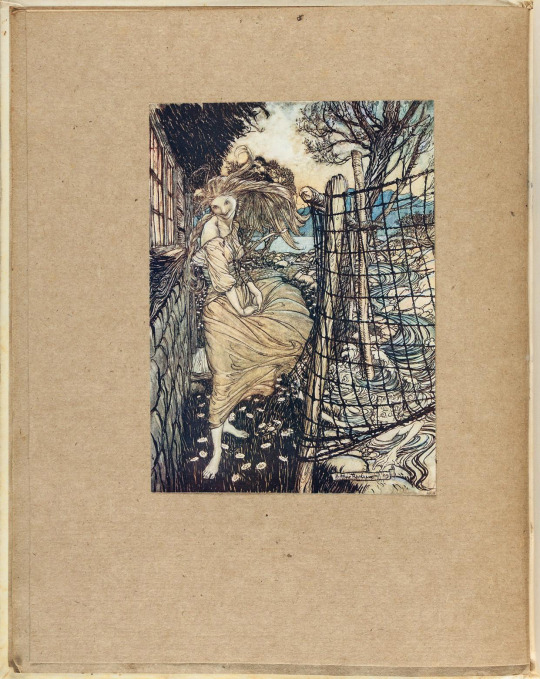
First Rackham Edition (1909) | src PBA Galleries
#undine#illustrations#illustrated book#1900s#Arthur Rackham#water spirit#water sprite#european myth#mythological themes#mythology
324 notes
·
View notes
Text
hey non-americans, yall are aware that cowboys still exist today right? yall know they aren't just from tales of the wild west yes???
please say yes
#cowboys#idk what to tag this to get it seen#europeans#i'm talking to you guys specifically#but the rest of the world too#actually no central and south america are exempt from this yall have them too#anyway i had a british person talk about them to me as if they were but a myth#and i had to um actually them#i imagine it'd be like any of us thinking shepherds don't exist anymore#like how tf do you think massive herds of cattle and horses are wrangled???#hell even in stockyards#anyway if you didn't know now you do
104 notes
·
View notes
Text

A path in Anoia (Penedès, Catalonia), with part of the Montserrat mountain range in front.
Montserrat is located right at the centre of Catalonia and for centuries has been considered its spiritual and religious heart. The weird shapes of the mountains (in the Catalan language, "Mont serrat" means "sawed mountain") have created many legends.
One of this legends says that each vertical shape in the mountain range was once a fierce giant warrior. As is common with legends, the story mixes real events (the Arab conquest of 711, the later conquest of the Catalan counts, the loss of Catalonia's statehood) with fantasy elements. Here's the legend:
When the Arabs invaded the Iberian Peninsula, their army brought giants to help them. These giants were so strong, that they could stomp on the local Catalans and if they were flies, and so it was easy for the Arabs to occupy most of Catalonia, with only the north remaining out of their reach. Some centuries later, Catalonia managed to invade southwards again. When the Arab rulers were expelled, the giants turned into stone, becoming the Montserrat mountain range.
But they didn't just die when they were petrified, there was one occasion where they could still move: every time a King of Catalonia got married, the giants came back to life and danced to celebrate it. When they were done, they turned back to stone, in a different position to before, thus changing the mountain's shape.
However, with time, royal marriages and wars, Catalonia lost its king, and became ruled by a foreign (Spanish) king. Since then, the mountain has no reason to celebrate and has not moved again. In the area, it is said that when Catalonia once again has a king, the mountains will come back to life and defend the land.
Photo from Visit Anoia. A source for the legend can be found here.
#llegendes#montserrat#catalunya#fotografia#natura#myths and legends#mythology#travel#travel photography#landscape#nature#landscape photography#mountains#hiking#europe#catalonia#giants#myths#european folklore
57 notes
·
View notes
Text

Charles Désiré Hue (French, 1833-1879)
The Myth of King Candaules, 1864
#Charles Désiré Hue#The Myth of King Candaules#King Candaules#1800s#art#fine art#european art#classical art#europe#european#fine arts#oil painting#europa#mediterranean#french art#french#france#cradle of civilization#classic art#blonde#woman#female
94 notes
·
View notes
Text

Legends and myths about trees
Legendary tree deities (23)
Metsaema – the mother spirit of the forest in Estonian mythology.
The name Metsaema translates to "forest mother" in Estonian (from metsa "forest" and ema "mother"). For this reason, the word metsaema can also be used as a descriptor of other similar deities in Eastern European mythology, for example Vir'ava.
The mother of the forest acts as ruler and guardian. She is sometimes also connected with fertility, acting as a midwife in some texts. Forest spirits are said to be found in each forest, ruling over the animals, birds, trees, and berries. Wild animals such as bears, snakes and wolves are commonly connected with them across European mythologies.
The shared elements of Finnic, Slavic, Baltic and Turkic mythology can be seen in similarities between forest mother spirits. Metsaema has strong similarities with the forest mother spirits Vir'ava, from Mordven mythology, and Meža mate, from Latvian mythology. Other related deities are the Lithuanian goddess of the forest and animals, Medeina, and the Finnish goddess of the forest, Mielikki (Ref).
[Photo below: European pine marten ]

木にまつわる伝説・神話
伝説の樹木の神々 (23)
メッツァエマ 〜 エストニア神話に登場する森の母なる精霊
メッツァエマという名前は、エストニア語で���森の母」と訳される(メッツァは「森」とエマは「母」の意)。このため、メッツァエマという言葉は、例えばヴィラーヴァのような、東欧神話に登場する他の類似した神々を表す言葉としても使われる。
森の母は支配者であり守護者である。彼女は時に豊穣にも関係し、助産婦のような役割を果たすくだりもある。森の精霊はそれぞれの森に存在し、動物、鳥、木、木の実を支配していると言われている。熊、蛇、狼などの野生動物は、ヨーロッパの神話に共通する。
フィンランド神話、スラブ神話、バルト神話、テュルク神話に共通する要素は、森の母なる精霊の類似性に見ることができる。メッツァエマはモルドヴェン神話の森の母なる精霊ヴィラーヴァやラトヴィア神話のメジャ・マテと強い類似性がある。他にも、リトアニアの森と動物の女神メデイナや、フィンランドの森の女神ミエリッキ(参照)が関連している。
#trees#tree myth#tree legend#Metsaema#folklore#mythology#legend#estonian mythology#forest mother#forest#european pine marten#forest spirit#nature#art
146 notes
·
View notes
Text
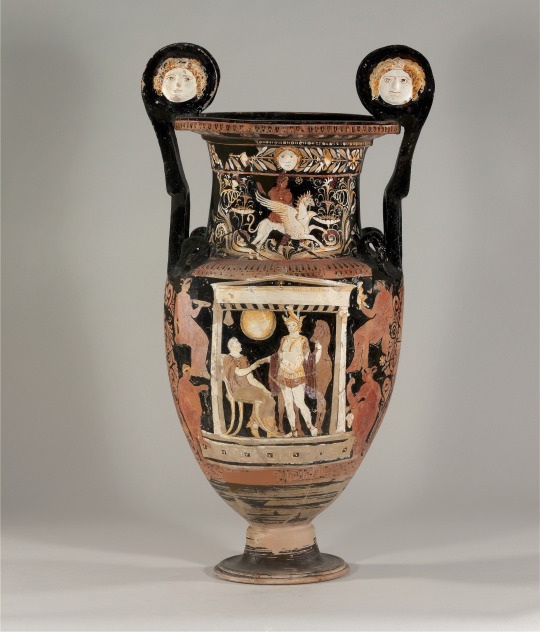
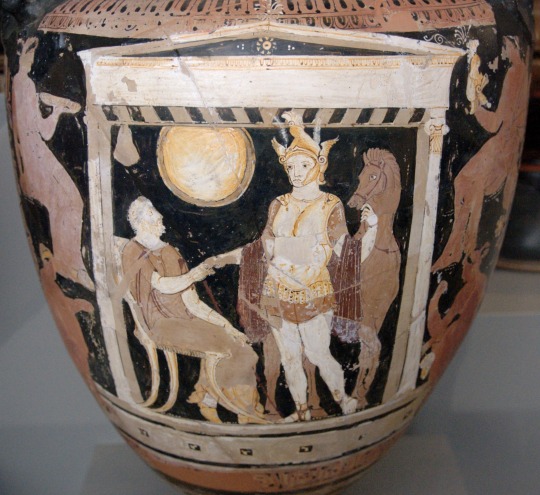
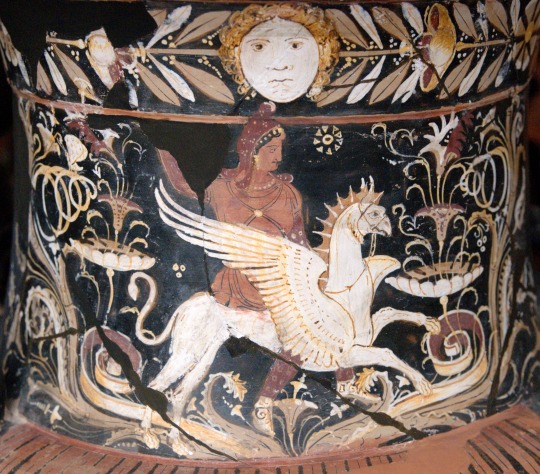
Apulian volute krater of Arimaspian riding griffin (above) & warrior departing family (below) by Loebbecke Painter 4th C. BCE. Side A: Grabnaiskos (tomb, warrior takes leave of his father) Side B: Grave stele.
"But in the north of Europe there is by far the most gold. In this matter again I cannot say with assurance how the gold is produced, but it is said that one-eyed men called Arimaspoi (Arimaspians) steal it from Grypes (Griffins). The most outlying lands, though, as they enclose and wholly surround all the rest of the world, are likely to have those things which we think the finest and the rarest."
-Herodotus, Histories 3. 116. 1 (trans. Godley) (Greek historian C5th BCE)
#ancient greece#scythian#arimaspian#antiquities#european art#literature#history#pagan#paganism#griffin#ancient history#4th century bce#greek myth
492 notes
·
View notes
Text
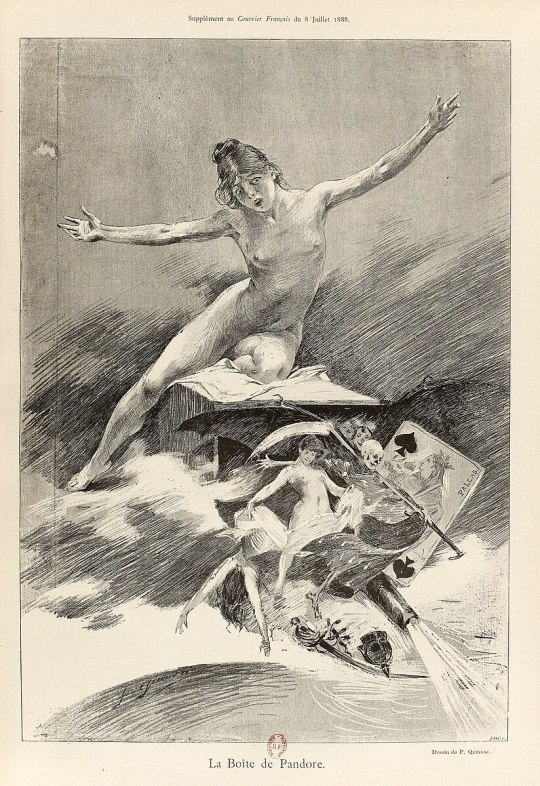
Pandora's Box, 1888
By Paul Quinsac
#art#drawing#fine art#classical art#french art#french painter#french artist#19th century art#late 1800s#pandora#greek mythology#mythological art#greek myth#mythology#european art
29 notes
·
View notes
Text

"We don't know when fairy tales began or what their origin was, but they are especially prevalent among Indo-European speakers and in the cultures with which Indo-European came in contact on the steppes".
-Brian Hayden.
Arthur Rackham's illustration for The Old Woman in the Wood.
#Brian Hayden#Arthur Rackham#grimm fairy tales#Grimm brothers#the old woman in the woods#indo-european#european tradition#steppe#traditionalism#myth#evola#carl jung#archetypes#joseph campbell#fairy tales#sacrality#sacred
133 notes
·
View notes
Text

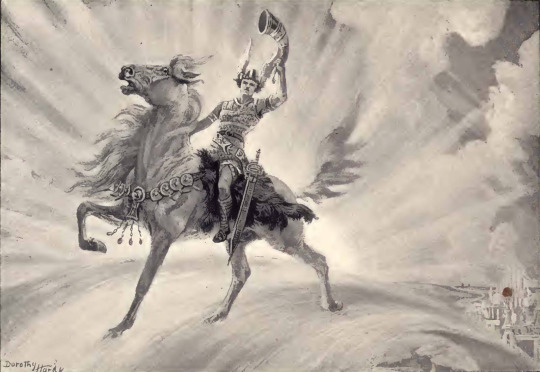
Heimdallr and Gulltoppr by Dorothy Hardy
#heimdallr#gulltoppr#art#dorothy hardy#heimdall#norse mythology#horse#horses#old norse#mythology#mythological#nordic#germanic#eddas#sagas#myths#norsemen#history#europe#european#scandinavia#scandinavian#northern europe#norse
112 notes
·
View notes
Text

The primordial cow, the first man Manu and twin Yemo, who was male and female, out of whose sacrificed body and blood the earth was created and the first humans came forth
Unicorn Wars (2022) x Proto Indo European Creation Myth
#Unicorn Wars#unicorn wars azulin#unicorn wars gordi#Proto indo European creation myth#Proto indo European cosmogony
28 notes
·
View notes
Text
It will be a cold day in hell when i let a white European tell me about privilege.
98 notes
·
View notes
